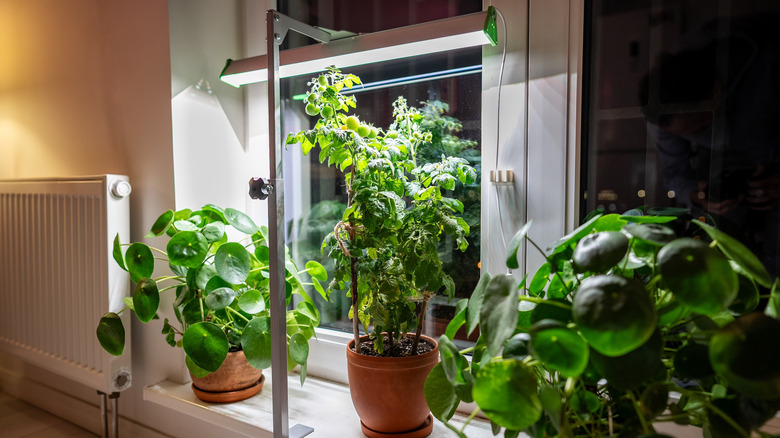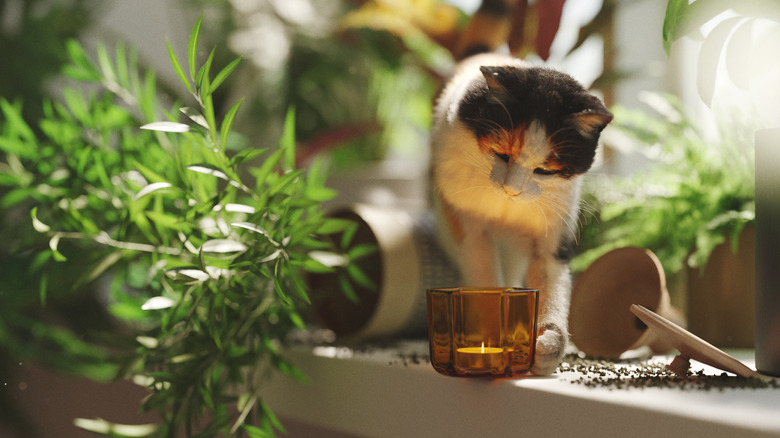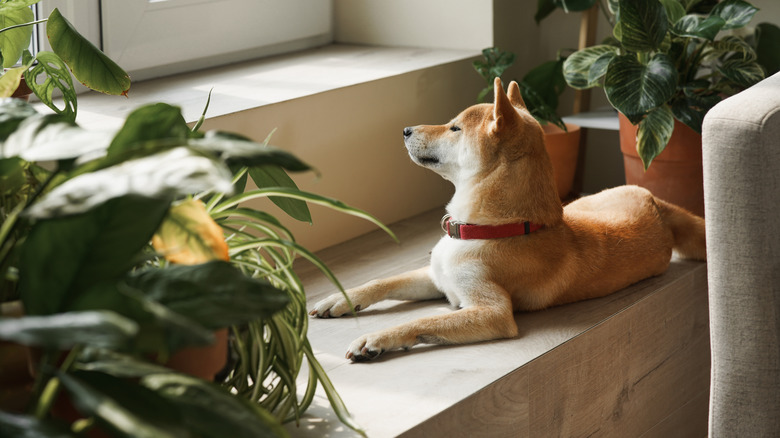Are Grow Lights Dangerous To Your Pets?
When the sun can't get in, using grow lights in your indoor garden allows you to keep your precious plants alive no matter the weather. There are several different types of grow lights for your indoor plants, but LEDs are the most popular because they are affordable, effective, and versatile. Their efficiency stems from the fact that their light generally contains more of the red and blue spectrums, which are the top light spectrums for peak photosynthetic activity. However, they have certain properties that can be harmful to your pets' well-being.
Most grow lights are safe for pets when they're installed correctly, but there are several important factors to take into account if you have furry family members. These factors include the lights' level of blue light and UV ray emission, flicker rate, and amount of heat generation. You should also give thought to where you intend to place the lights, and whether this placement could exacerbate their potential harmfulness to your pets.
Exercise caution with grow lights around your pets
The blue light spectrum may be great for your plants, but it is not so great for your pets. Prolonged exposure to blue light can affect their circadian rhythm, thus disrupting their day-night cues. This can lead to restlessness, anxiety, and behavioral changes. Blue light can also affect your pet's eyes and cause discomfort if exposed for long periods. Some grow lights mimic the Ultraviolet (UV) ray emission of the sun, which can be a potential source of skin diseases and eye concerns for pets after long periods of exposure. (Note that pets with thick, dark fur are more protected from the skin effects of UV radiation than ones with little hair or none at all.)
Your grow lights' heat generation is another potential safety hazard, which is true of most light sources. If your grow light produces significant heat, pets could suffer burns if they get too close, and your lights could also present fire hazards if they're in areas your pets can reach. Finally, you should check the flicker rate of any grow lights you're thinking about buying. All artificial lights have a flicker rate, which is the fluctuation in the intensity of light per unit of time. LED lights have a very high rate of 1,000 to 2,000 times per second, which your pets can't perceive. However, some grow lights, such as fluorescent bulbs, have flicker rates that can be detected by your pets and could be potential stressors.
How to make grow lights work with your pets
Thankfully, you don't have to start tossing out your grow lights, as there are ways to make them safer for your pets. First, consider purchasing grow lights with a full or balanced color spectrum. This will eliminate excessive exposure to blue or UV light, preventing eye and skin irritation. Red lights are also a good option if you have dogs, as these lights are actually thought to have beneficial properties for canine companions. Keep in mind that it's important to select grow lights with adjustable intensity so you can dim the light if necessary. To deal with the problem of excessive heat generation, opt for low-temperature grow lights with optimal heat distribution.
With all these considerations in mind, LED grow lights are probably your best bet if you need a grow light that is safe for your pet. They offer a balanced light spectrum while delivering low heat output, and they have a high flicker rate that is undetectable by most animals. To deal with the possible problem of blue light exposure, turn off grow lights at night to allow a proper dark period for your pet to sleep. Create the perfect indoor garden in a room or spot your pet can't reach or doesn't frequent, and properly manage your cords to keep them out of your pet's path.


